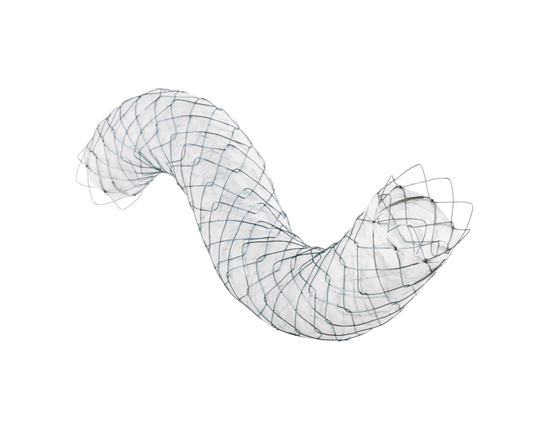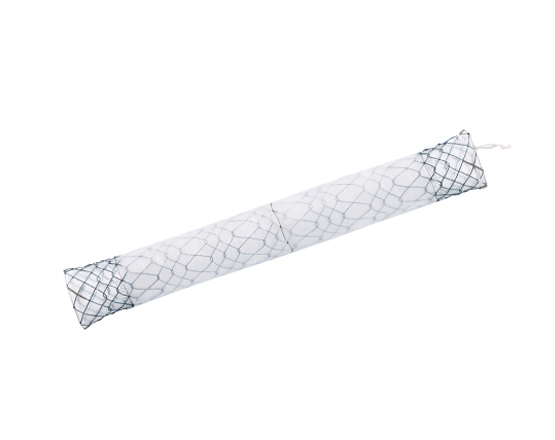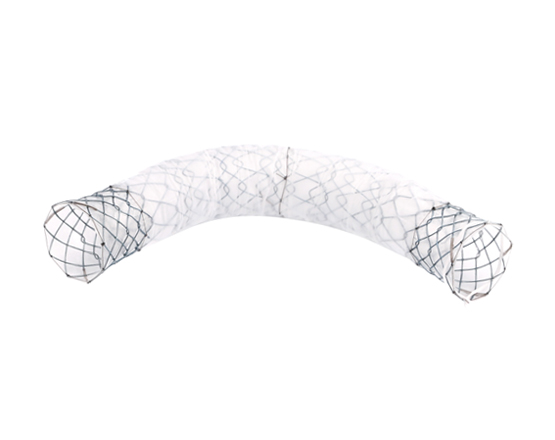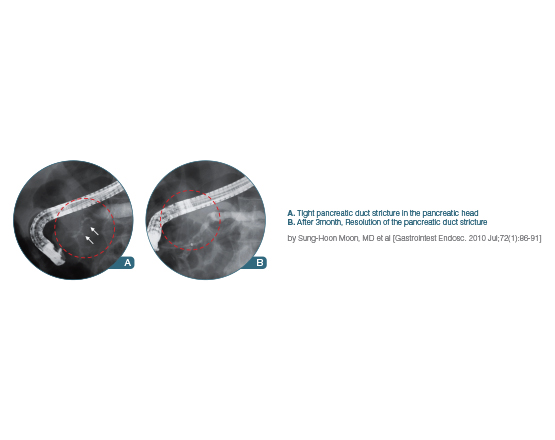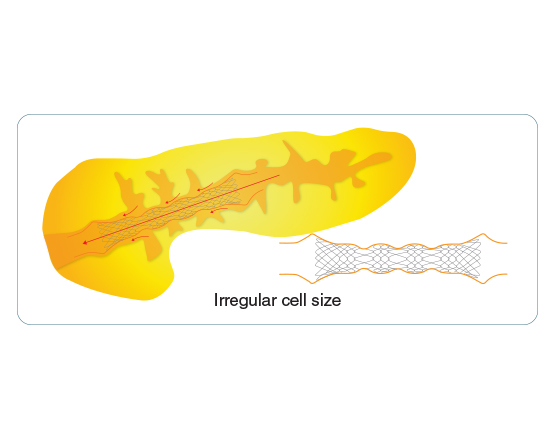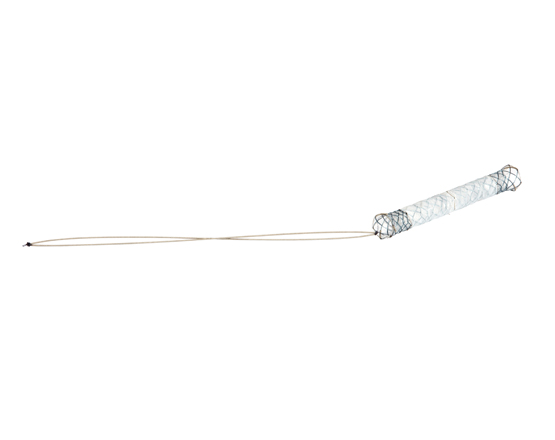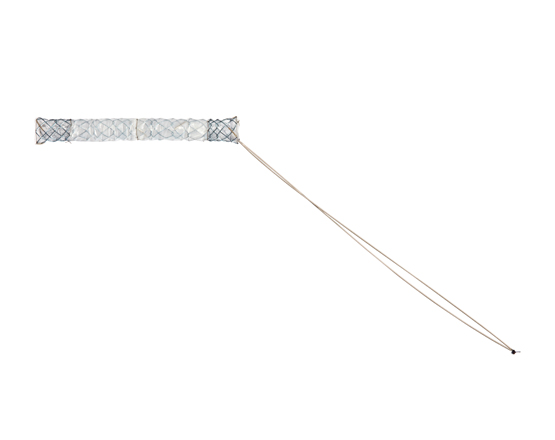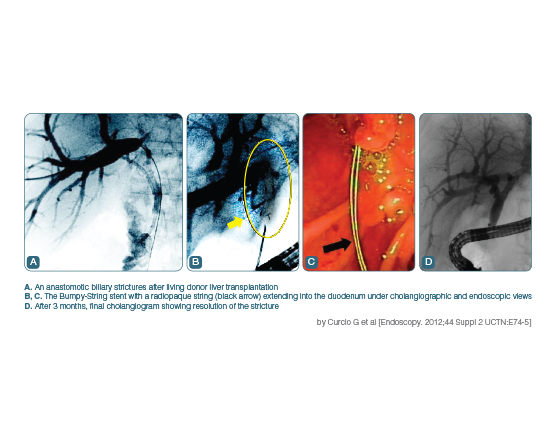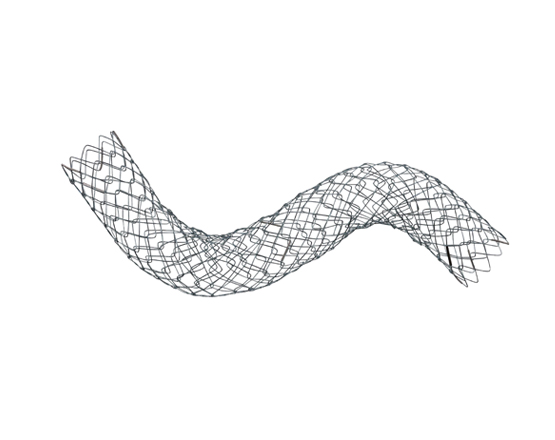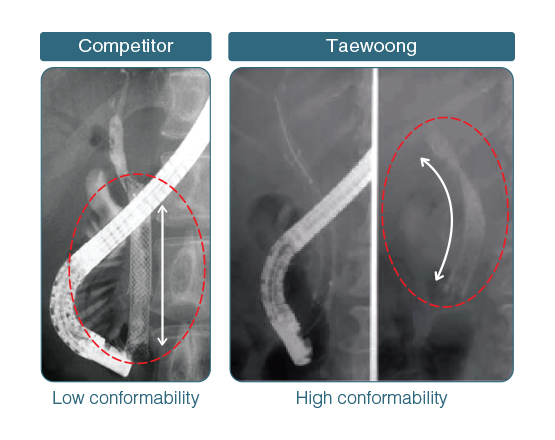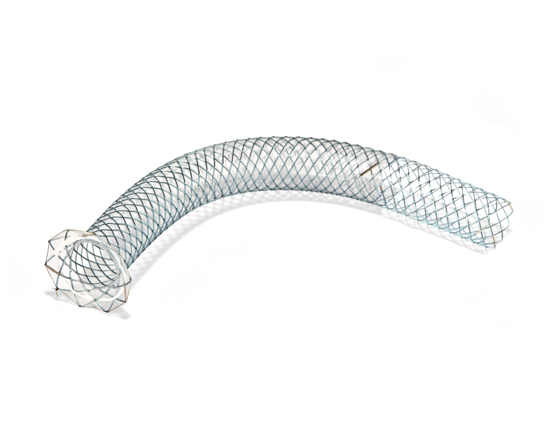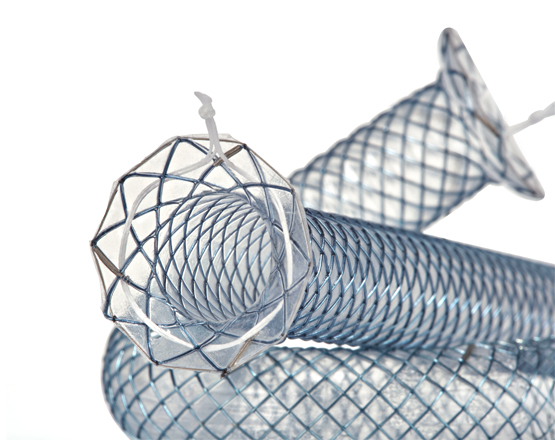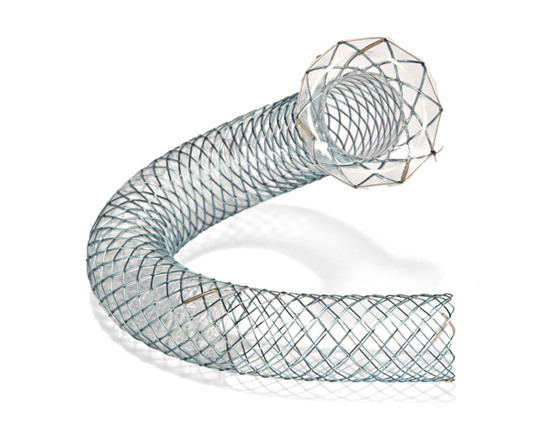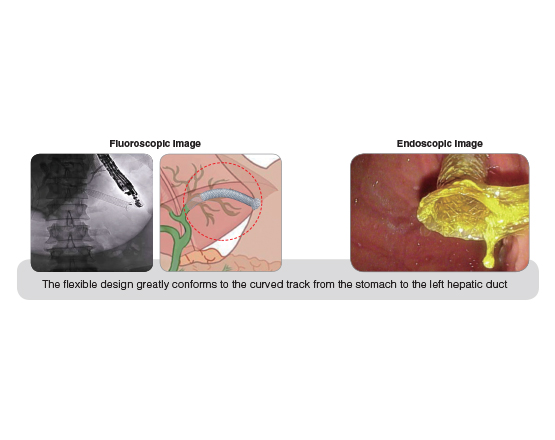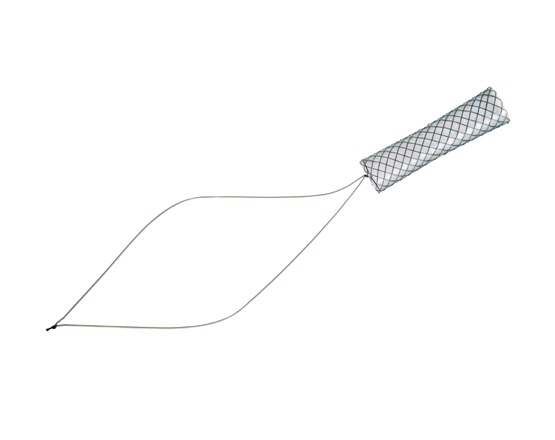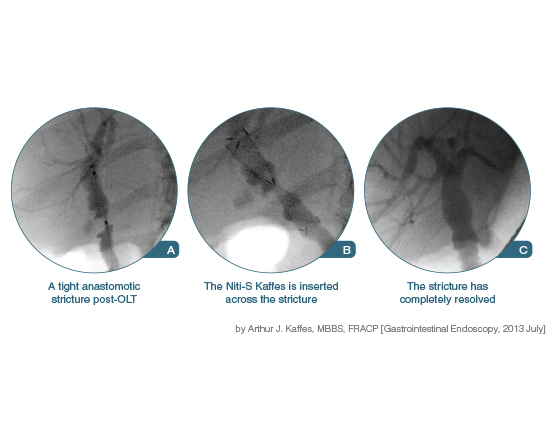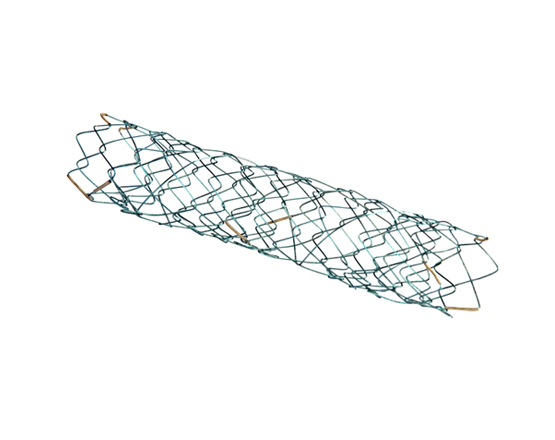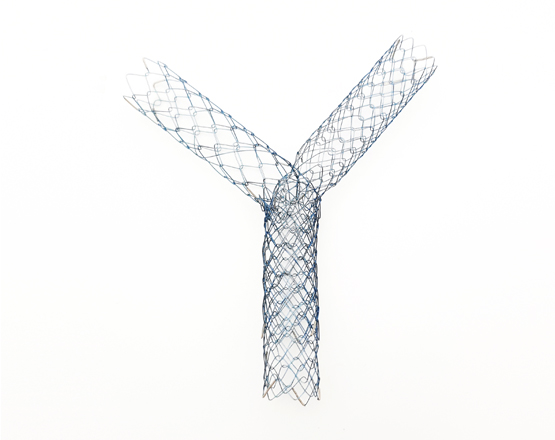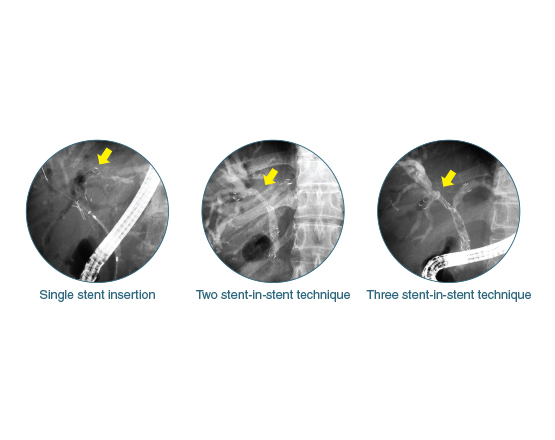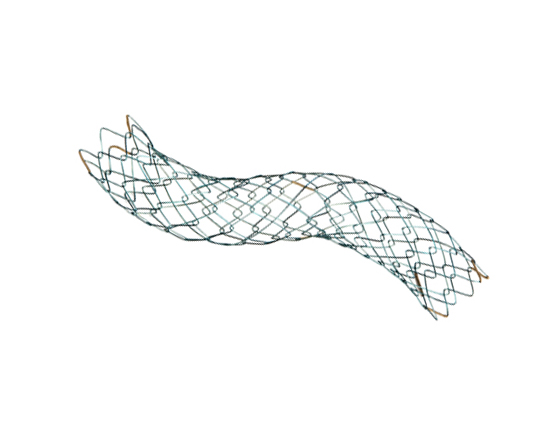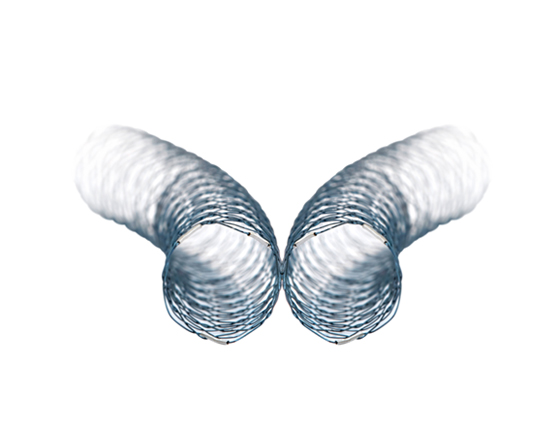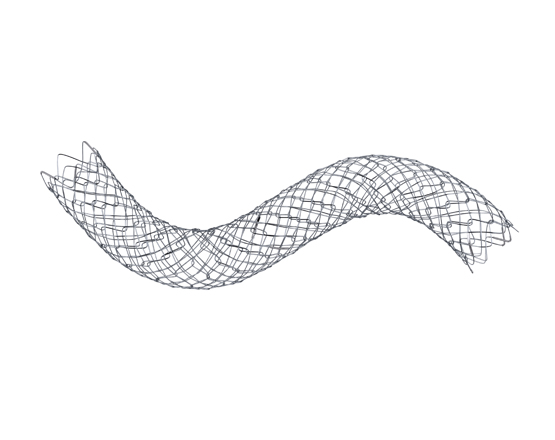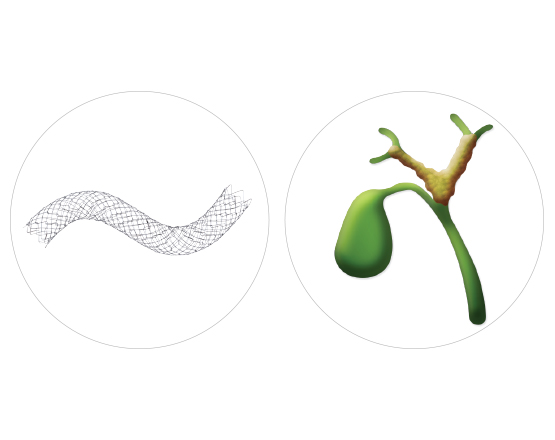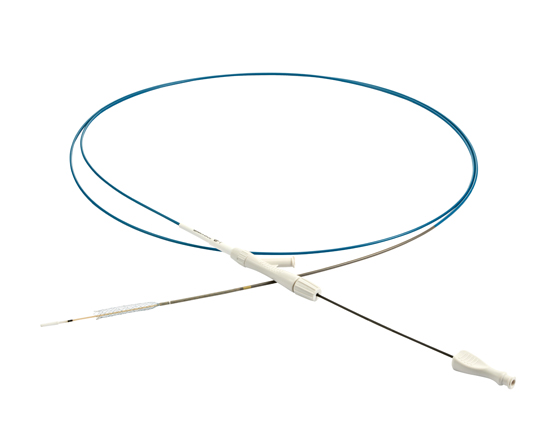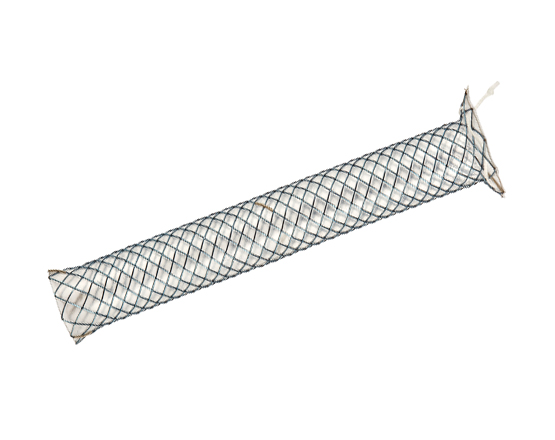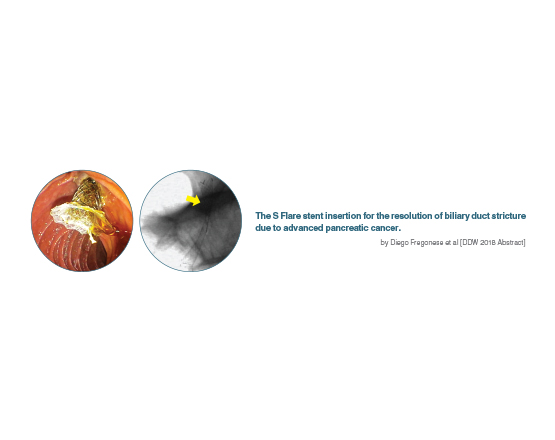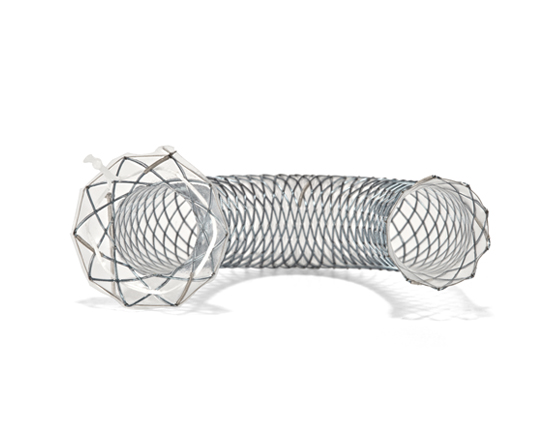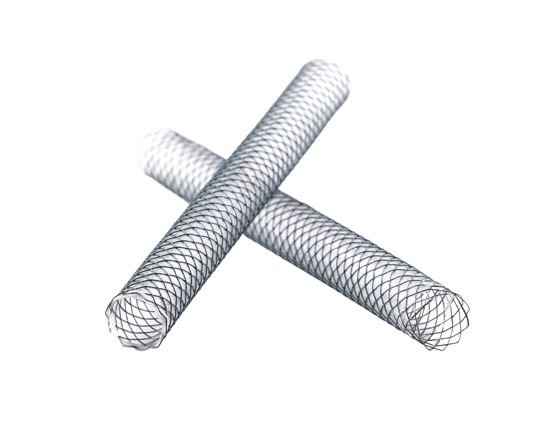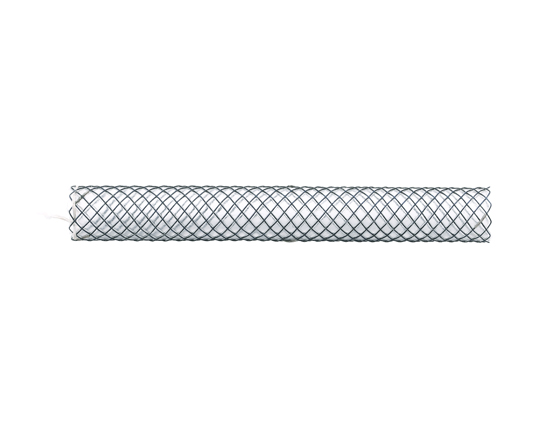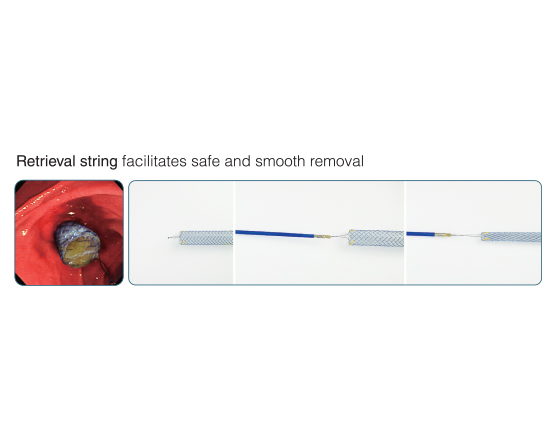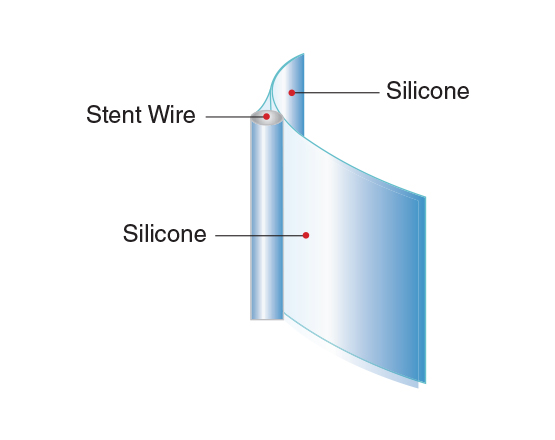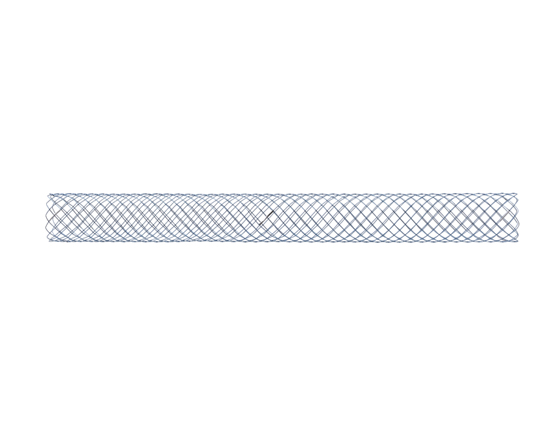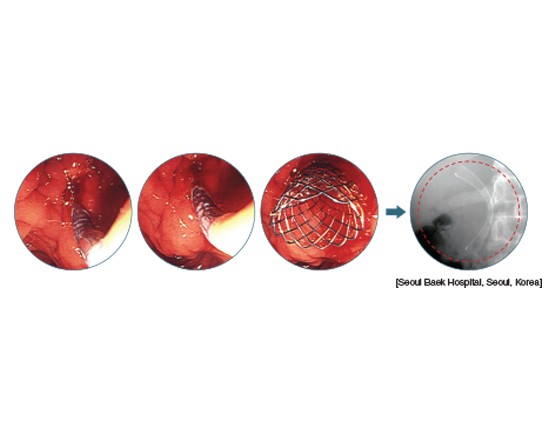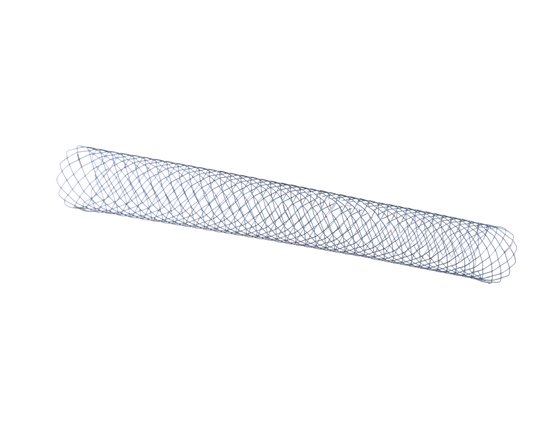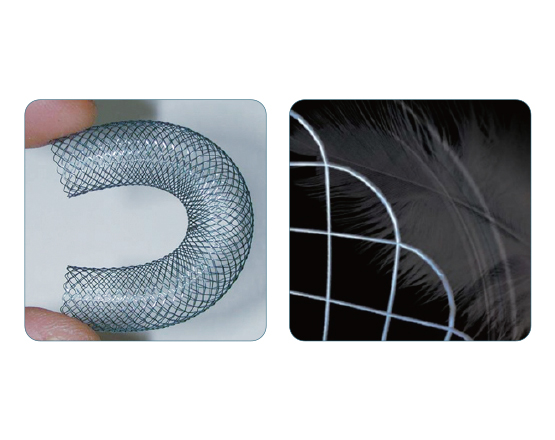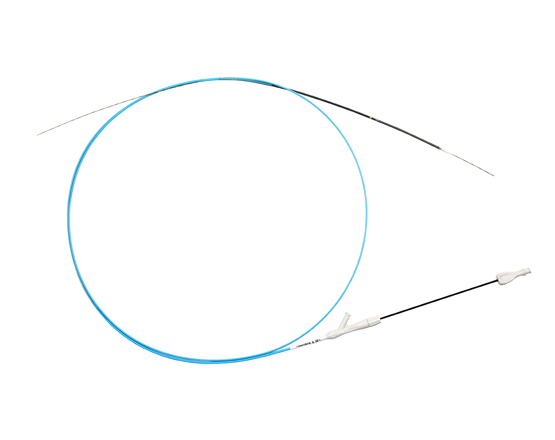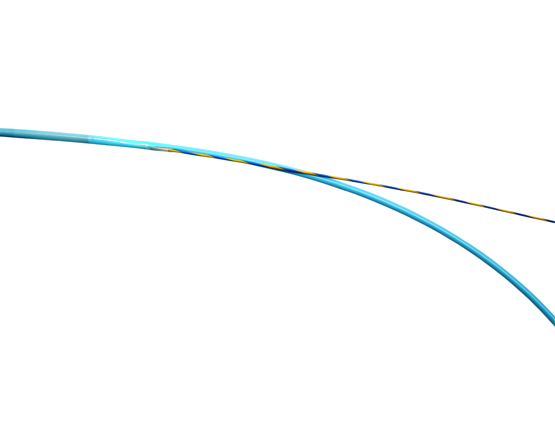Biliary Stents
COMVI Biliary Stent
Request more information
● Triple-layered construction
– Biocompatible PTFE membrane tube is held between the inner and outer mesh
– The unfixed cell structure enables the stent to conform to the shape of the bile duct
– The PTFE membrane prevents the risk of tissue invasion
– The outer wire mesh prevents the risk of migration
● Minimum foreshortening for accurate stent placement
● Radiopaque marker : Four (4) at both covered part ends
Categories:
Niti-S BUMPY Biliary Stent
Request more information
Niti-S BUMPY Biliary Stent is used for benign biliary strictures and pancreatic strictures.
● Irregular cell sizes with different magnitudes of segmental radial force with flared ends
– Irregular cell sizes of segmental radial force does not completely compress the side branches for preventing stent related pancreatic sepsis or pancreatitis
● Anti-migration : Both flared ends prevent the risk of migration
● Easy removal : Fully PTFE (body portion) and silicone (both flared ends) covered design along with a removal string at the proximal end of the stent for easy removal
● Radiopaque marker : Three (3) at both ends & Two (2) in the middle
Niti-S BUMPY String Biliary Stent
Request more information
Niti-S BUMPY String Biliary Stent is used for anastomotic strictures after liver transplantation.
● Both flare ends and the irregular body cell size of segmental radial force prevent the risk of migration
● The short length of the stent reduces stent-related complications
● Platinum radiopaque marked, 10cm long retrieval string helps easy removal
● Radiopaque marker : Three (3) at both ends & two (2) in the middle
Categories:
Niti-S D Biliary Stent
Request more information
Niti-S D Biliary Stent is used in malignant biliary strictures.
● Unfixed cell with a weaving construction
– Low foreshortening for accurate positioning
– Optimal combination of radial and axial force to maintain luminal patency in tortuous anatomy
● Radiopaque marker : Three (3) at both ends & Two (2) in the middle
Categories:
Niti-S GIOBOR Biliary Stent
Request more information
Niti-S GIOBOR Biliary Stent is used for EUS-guided hepaticogastrostomy.
● Partially covered design
(1) The long covered portion (70%)
– prevents bile leakage between the left hepatic duct and the stomach
(2) The bare portion (30%)
– avoids the blockage of the side branches in the hepatic duct
– prevents migration into the hepatic duct
● The anti-migration flared end
– is placed out of the stomach wall and prevents migration in the left intrahepatic duct
● Radiopaque marker : Three (3) at both ends & Two (2) at the end of the covered part
Niti-S KAFFES Biliary Stent
Request more information
Niti-S KAFFES Biliary Stent is used for anastomotic strictures after liver transplantation.
● Characteristic waist at mid-portion of the stent
– The waist shape of the stent allows strong radial force and prevent migrations
● Short length of stent
– Using a short stent across the stricture prevents imparting pressure over a large area of the normal duct by reducing the potential risk of necrosis and fibrosis
● Long platinum radiopaque retrieval string
– The long platinum string helps easy removal from the high up location of the CBD
● Radiopaque marker : Three (3) at both ends & Two (2) in the middle
Categories:
Niti-S LCD Biliary Stent
Request more information
Niti-S LCD Biliary Stent is used for hilar obstruction.
● Large-cell structure for easy 2nd stenting
– The large cell design with a weaving construction enables convenient positioning of the 2nd stent
– The low axial force and optimal radial force helps the stent firmly conform to the hilar biliary anatomy for patients’ comfort
● The optimized design for the SIS (Stent-In-Stent) Procedure
– The adjustable vertical axis can be easily moved aside during the SIS procedure for the second stenting while enhancing the stent kinking resistance
– The 6Fr delivery system facilitates easy access to the lesion while enabling smoother deployment
– 7,8Fr delivery system are also availble
● Radiopaque markers : Three (3) at both ends & Two (2) in the middle
Categories:
Niti-S M Biliary Stent
Request more information
Niti-S M Biliary Stent is used for malignant hilar strictures.
● Braided and a weaving construction
– Foreshortening reduced while preserving optimal conformability
● Smooth Side-by-Side Stenting Procedure
– Two (2) 6Fr delivery systems can be introduced simultaneously into the working channel for the side-by-side stenting procedure at the hilar biliary stricture
● Radiopaque markers : Three (3) at both ends & Two (2) in the middle
Categories:
Niti-S S Flare Biliary Stent
Request more information
Niti-S S Flare Biliary Stent is used for benign and malignant biliary strictures.
● The full silicone-covered body prevents tissue in-growth
● Flares at both ends with different angles prevent migration effectively
● A proximal retrieval string helps for easy removal or repositioning
Categories:
Niti-S Self-Expandable Metal Stent - S Biliary Stent (Covered)
Request more information
S Biliary Stent (covered) used for benign and malignant biliary strictures.
- It is a fixed cell with braided construction for Flexible and resistant to fracture
- Atraumatic ends for less hyperplasia at the edges
- Silicone covering on both inner and outer surface to prevent the risk of tumor ingrowth and help smooth bile flow
- Retrieval string facilitates safe and smooth removal
- Radiopaque marker: 3 (three) at both ends & 2 (two) in the middle
Available in Endoscopic and Percutaneous approach.
Categories:
Niti-S™ Self-Expandable Metal Stent - S Biliary Stent (Uncovered)
Request more information
Uncovered S type Biliary stent is designed for the malignant biliary stricture. The main characteristics are:
- Fixed cell with a braided construction for Flexible and resistant to fracture
- Atraumatic ends for Less hyperplasia at the edges
- Radiopaque marker for Three (3) at both ends & two (2) in the middle
Categories:
Short-wire Delivery System for Biliary Stents
Request more information
Short-wire Delivery System for Biliary Stents
● Time saving during device exchanges and therapeutic maneuvers
● Reduction of fluoroscopy exposure time
● Maintains access
● Less dependence on a well-trained assistant
● Easy control of the guidewire
Categories:


